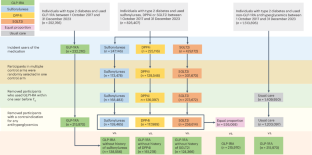2025-01-24ニューヨーク大学 (NYU)
<関連情報>
- https://www.nyu.edu/about/news-publications/news/2025/january/vr-subway-experiment-highlights-role-of-sound-in-disrupting-bala.html
- https://journals.plos.org/plosone/article?id=10.1371/journal.pone.0317955
実音は前庭喪失者の姿勢安定性に影響するが、健常対照者では影響しない Real sounds influence postural stability in people with vestibular loss but not in healthy controls
Anat V. Lubetzky ,Maura Cosetti,Daphna Harel,Marlee Sherrod,Zhu Wang,Agnieszka Roginska,Jennifer Kelly
PLOS ONE Published: January 24, 2025
DOI:https://doi.org/10.1371/journal.pone.0317955
Abstract
Objective
What we hear may influence postural control, particularly in people with vestibular hypofunction. Would hearing a moving subway destabilize people similarly to seeing the train move? We investigated how people with unilateral vestibular hypofunction and healthy controls incorporated broadband and real-recorded sounds with visual load for balance in an immersive contextual scene.
Design
Participants stood on foam placed on a force-platform, wore the HTC Vive headset, and observed an immersive subway environment. Each 60-second condition repeated twice: static or dynamic visual with no sound or static white noise or real recorded subway station sounds [real] played from headphones.
Setting
Human motion laboratory.
Participants
41 healthy controls (mean age 52 years, range 22–78) and 28 participants with unilateral peripheral vestibular hypofunction (mean age 61.5, 27–82)
Main outcome measures
We collected center-of-pressure (COP, anterior-posterior, medio-lateral) from the force-platform and head (anterior-posterior, medio-lateral, pitch, yaw, roll) from the headset and quantified root mean square velocity (cm/s or rad/s)
Results
Adjusting for age, the vestibular group showed significantly more sway than controls on: COP medio-lateral (no sound or real with static or dynamic visual); COP anterior-posterior (only on dynamic visuals in the presence of either sound); head medio-lateral and anterior-posterior (all conditions), head pitch and yaw (only on dynamic visuals in the presence of either sound). A significant increase in sway with sounds was observed for the vestibular group only on dynamic visuals COP anterior-posterior and head yaw (real) and head anterior-posterior and pitch (either sound).
Conclusions
The addition of auditory stimuli, particularly contextually-accurate sounds, to a challenging, standing balance task in real-life simulation increased sway in people with vestibular hypofunction but not in healthy controls.
Trial registration
This study was registered on clinicaltrials.gov at the following link: https://clinicaltrials.gov/study/NCT04479761.


